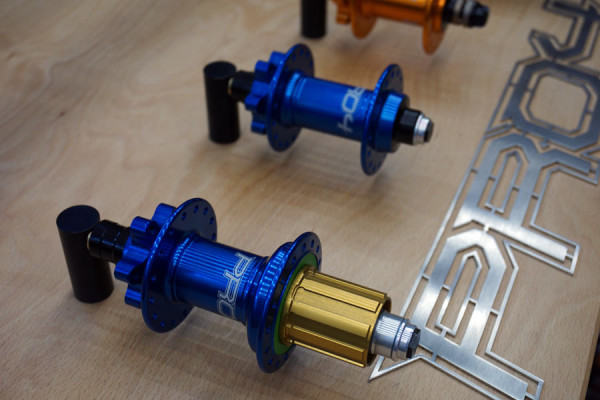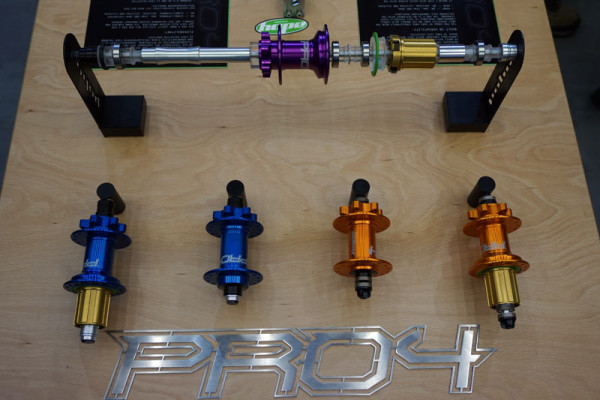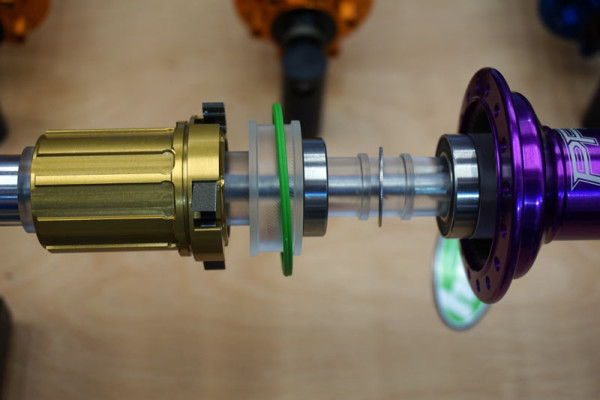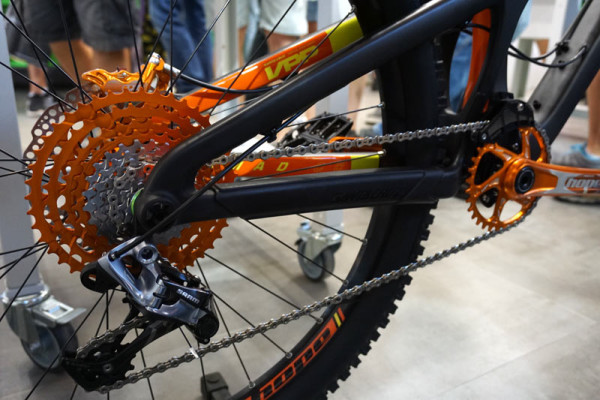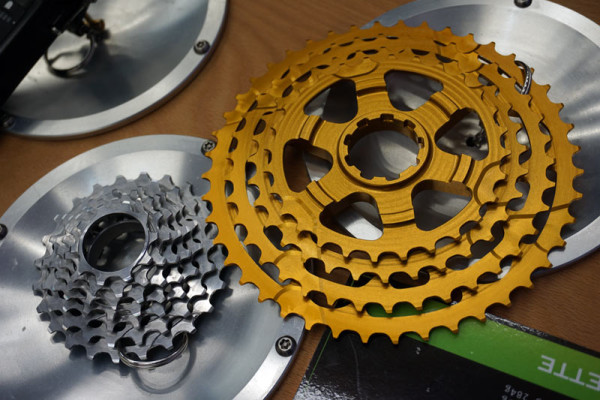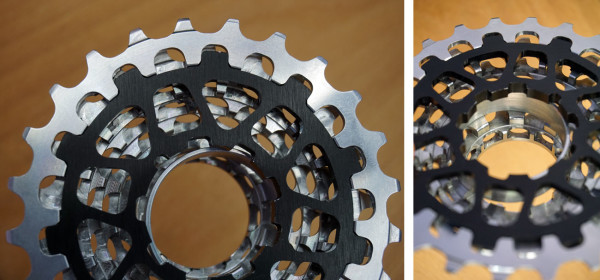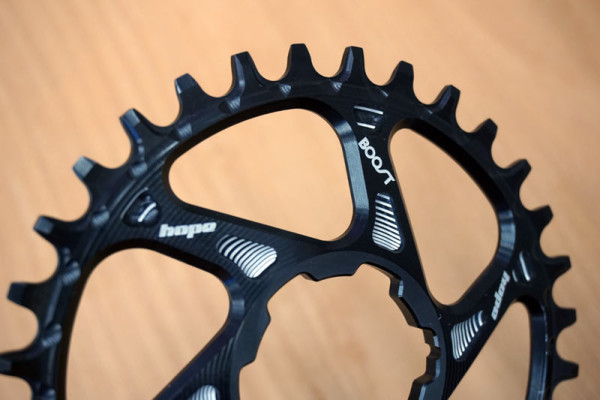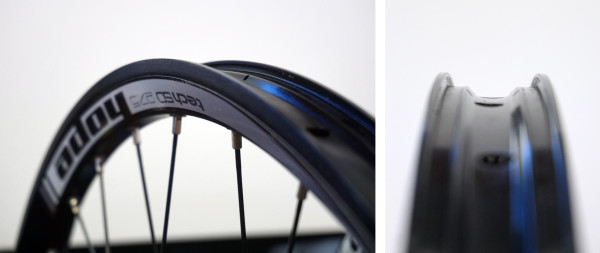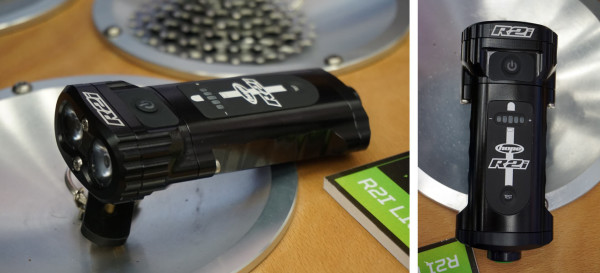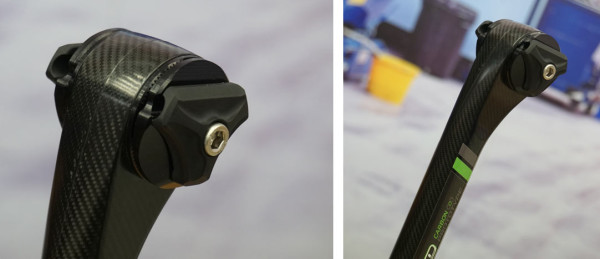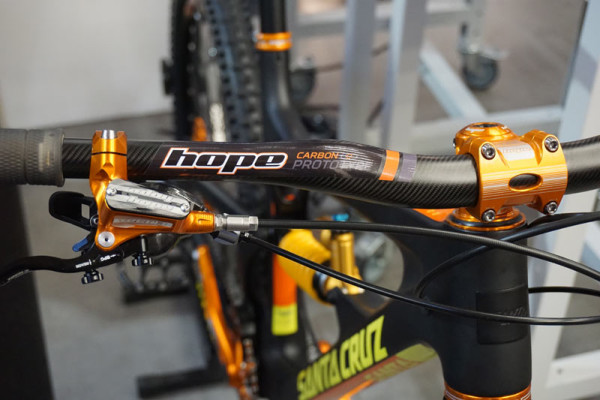For 2016, Hope Tech painted just about every part they make with the upgrade brush, dipping it in orange ano first to provide a new color to replace gunmetal grey.
Starting with their well-sealed hubs, they’ve added Boost 148 rear and 110 front options to the mix. Even better, if you’ve already built up a set of wheels with their hubs, they’ll be offering disc brake spacers and new end caps to make those wheels fit into a Boost frame! So, while they joked that they’d have a new hub compatible with any future standard, these at least get pretty close.
Inside, the new Pro 4 gets an upgraded the ratchet ring to 44 teeth, providing 10% quicker engagement than the Pro 2 Evo these are based on. They increased flange diameter to make stiffer wheels, and added an 11-speed compatible Shimano freehub.
To go on those hubs are an all new wide range cassette, and so much more for every other part of your bike…
The new hubs are compatible with just about every axle standard you can imaging: Front QR/9mm/12mm/15mm/20mm and rear QR/10mm/12 x 142. That, along with freehubs for SRAM/Shimano, Campagnolo and XD mean they’re good for road, mountain, cyclocross and anything else.
For DH, they have another new version that pushes the flange spacing out wider, and it’s built around their 7-speed DH cassette cluster. The result is an almost dish-less rear wheel.
As usual, the shell, freehub body and axle are all made in their own facility in the UK. If you’ve never ridden Hope’s hubs, they can feel a little (or a lot) tight at first, but that’s likely because of the heavy duty sealing required to keep out the constant damp and muck UK riders are subjected to for so much of the year. The new hubs (and cassette, below) will be available in January 2016.
Their new wide range cassette option pulls double duty…and shows off the new orange color that’s now an option on just about every part they make. Like the lightweight cranks they introduced in January.
Their wide range cassette is really their steel 7-speed DH cassette coupled with a one-piece alloy upper cluster.
The lower cluster is a one-piece unit machined from hardened stainless steel. Two versions are available, one for use as a 7-speed DH cluster and when paired with the 3-speed upper to create a 10-speed system, and another with the correct cog spacing to create an 11-speed system.
The upper is also milled from a single piece of billet, except it’s alloy. It’s available in 3- and 4-cog parts to work with 10 or 11 speed groups. These will wear faster, but they’re easily replacable. Complete cassette options are:
- 10-40 (10spd) – 250g
- 10-40 (11spd) – 273g
- 10-44 (11spd) – 284g
The catch, as we learned when they showed it in prototype form, is that you’ll have to use their freehub body (and thus hubs) to use the cassette. The 10-tooth cog drops down off the end of the freehub body, which requires their own shorter body.
At the other end of the drivetrain, they’ll now offer a Boost compatible narrow/wide single chainring.
To go with the new DH hubs are the new Tech SD 27.5 DH rims. They’re 600g alloy rims that measure 33mm wide and made to withstand both practice and competition runs without getting bent outta shape. Available in October 2015.
Bringing all those parts back down to speed are refined two-piece floating rotors. The rivet and center sections were reworked to save a bit of weight. They’ve also formally adopted the 180mm diameter standard, down a bit from their previous 183mm options (which they’ll still manufacture, too). To go with the 180s, they’ll have new mounting adapters to fit. This also opens up the rotor to use on other brand brakes without special adapters. Brand fans may also notice the new profile for the steel braking surface. The harsh sawtooth edges are gone in favor of softer, rounder indents, and the holes are rounder.
In the past, all of Hope’s lights used an external battery to keep the head unit small and offer versatile placement options for the power source. But some folks bugged them enough for an all in one, so the new R2i integrates the battery pack into the body. It’ll come in a standard R2 version, also, with remote battery. Both claim 1,300 lumens (1,000 lumen measured output) and run times from one to 30 hours depending on which of the six settings you choose.
Not shown, the R4 gets bumped up to 2,000 lumens (1,500 measured). The R2s, R4 and R8 all get backlit switches with multi-colored LEDs to show color coded battery charge level.
Last year, Hope invested in in-house carbon fiber manufacturing, teasing this very seatpost. Now, it’s here, and it’s their first carbon product made in England from their own factory. The post body is shaped with varying thicknesses internally to put strength where it’s needed and save weight where it ain’t. It uses the same aircraft grade micro adjust alloy head as their Eternity post, but comes in as light as 195g for the 27.2. Also available in 30.9 and 31.6.
Coming up next is a full carbon fiber riser bar. This prototype shows what it could look like (along with a lot more of the orange color!), but it’s still in the development stage.
